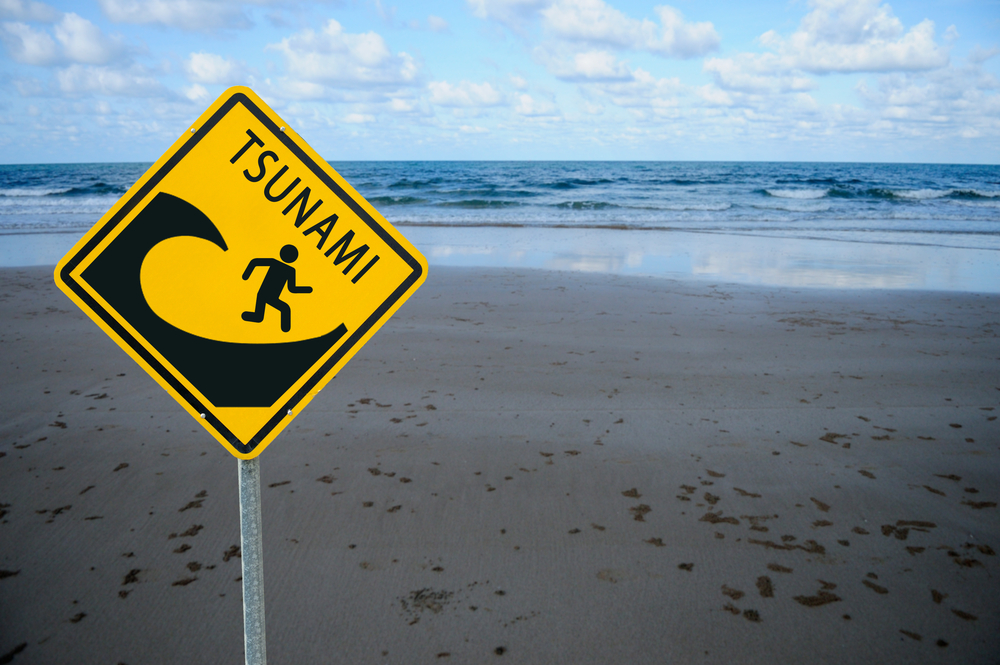Researchers used AI to identify changes in Earth’s atmosphere generated when tsunami waves start forming at sea.
This could significantly extend the warning time for coastal communities facing risks from tsunamis.
Valentino Constantinou from Florida-based Terran Orbital Corporation explains, “There is no global network for detecting tsunami waves and installing physical hardware, like buoy-based systems, is expensive. But we know that small satellite constellations are just proliferating everywhere.”
The velocity of the signals produced by earthquakes at sea is influenced by the density of charged particles in the Earth’s ionosphere, which is about 300 to 350 kilometers above the surface.
When a tsunami generates shock waves that ascend into the atmosphere, they alter the density of these charged particles, leading to slight but detectable modifications in the signals received by satellites.
Previous research conducted by NASA’s Jet Propulsion Laboratory and the Sapienza University of Rome in Italy led to a computational method for gauging fluctuations in charged particle density due to tsunamis.
Building on this, Constantinou and his team converted the data, originally in one-dimensional formats, into two-dimensional images. These images were then analyzed by AI models for signs related to tsunamis.
The team trained their AI system using data from three specific earthquake-induced tsunamis: the 2010 Chilean, 2011 Japanese, and 2012 Canada tsunamis.
They tested the model’s effectiveness on a fourth tsunami caused by the 2015 Illapel earthquake in Chile. The AI was scrutinized to assess how well it could differentiate tsunami-induced changes from standard ionospheric background noise.
In order to minimize false positives, the researchers filtered disturbances caused by ground stations in communication with the overhead satellites.
According to Quentin Brissaud from NORSAR, a Norwegian seismic research foundation not linked to the study, this methodology yielded “pretty good results” with a detection accuracy rate exceeding 90%. However, Brissaud pointed out that more data would be needed to ascertain the reliability of this system for different types of tsunamis.
Quentin Brissaud notes that “the rarity of huge tsunamis makes it challenging to analyze and predict such events.”
One of the challenges in deploying a global tsunami warning system is the need for international data sharing. As Constantinou mentions, “Data is often held by governments or commercial partners operating the satellites. There is no one place to grab the data for a global system.”
More about the study
This study combines satellite data with machine learning (ML) to analyze changes in the Earth’s atmosphere triggered by tsunamis.
While tsunami detection has advanced recently, many coastlines still have inadequate coverage from early warning systems.
Here’s how it works:
- Researchers have developed an AI-based framework to identify early signs of tsunamis by monitoring Traveling Ionospheric Disturbances (TIDs) in the Earth’s ionosphere. These disturbances affect the Total Electron Content (TEC), which is detectable through the Global Navigation Satellite System (GNSS).
- This approach leverages data from multiple satellite systems like GPS, Galileo, GLONASS, and BeiDou. It offers real-time, open-ocean coverage, serving as a valuable supplement to geographic areas not accessible by traditional buoy-based warning systems.
- The AI model uses Convolutional Neural Networks (CNNs) trained on historical data from the 2010 Maule, 2011 Tohoku, and 2012 Haida-Gwaii tsunamis. It was later validated with data from the 2015 Illapel tsunami, achieving an accuracy score of 91.7%.
- The system employs a False Positive Mitigation (FPM) strategy, which significantly reduces the rate of false alarms.
Many AI systems are deployed to predict environmental disasters, including Google’s Flood Hub, which was recently expanded to cover more regions.





